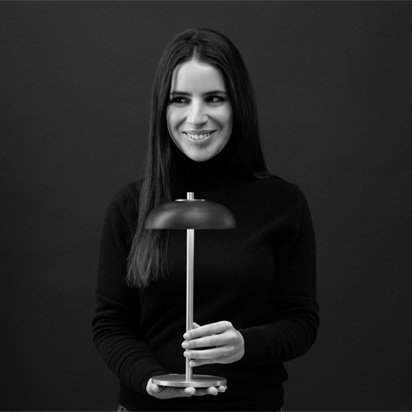
True sustainability
Mónica Hedderich
Sustainable Design: small gestures for big solutions
Filipa Fleming
Founder of Filipa Fleming Interior Design

More than a trend, sustainability must be seen as a necessity. The need to become aware of the environmental impact of your choices and actions, to change habits and behaviours, to care for your neighbour and the planet.
Each of us has an essential role to play, whether in our personal life or professionally. As an interior designer, I take care to make more environmentally responsible decisions in the creation of projects, because this is an area where much can be done for the good of the planet and the people who will inhabit the spaces. And the truth is that Filipa Fleming Interior Design has an increasing amount of clients who are looking for more ecological solutions.
Sustainable design means, for example, the use of recycled materials or the use of pieces made from natural raw materials or sustainably sourced. And, very importantly, it means reusing furniture, adapting it to a new décor, giving it a new life and, often, preserving old pieces full of history. In addition to reducing waste, we instil the design with a personal touch and identity.
Even if, initially, these practices may be more expensive, they will pay off in the long run. Higher quality materials and pieces withstand the passage of time and can be adapted to different needs over the years. On the other hand, recycled materials are increasingly affordable.
Sustainability is also related to efficiency in the use and optimisation of natural light, using, for example, materials that reflect light. When it comes to saving energy, chosing LED bulbs, presence sensors and class A appliances will make all the difference.
Sustainable practices also manifest themselves in the physical and emotional comfort of those who will live in the spaces. And one of the biggest contributions is biophilia, bringing nature into the built environments through the use of plants and the incorporation of other elements that re-establish the connection between people and the natural world.
Each of us has an essential role to play, whether in our personal life or professionally. As an interior designer, I take care to make more environmentally responsible decisions in the creation of projects, because this is an area where much can be done for the good of the planet and the people who will inhabit the spaces. And the truth is that Filipa Fleming Interior Design has an increasing amount of clients who are looking for more ecological solutions.
Sustainable design means, for example, the use of recycled materials or the use of pieces made from natural raw materials or sustainably sourced. And, very importantly, it means reusing furniture, adapting it to a new décor, giving it a new life and, often, preserving old pieces full of history. In addition to reducing waste, we instil the design with a personal touch and identity.
Even if, initially, these practices may be more expensive, they will pay off in the long run. Higher quality materials and pieces withstand the passage of time and can be adapted to different needs over the years. On the other hand, recycled materials are increasingly affordable.
Sustainability is also related to efficiency in the use and optimisation of natural light, using, for example, materials that reflect light. When it comes to saving energy, chosing LED bulbs, presence sensors and class A appliances will make all the difference.
Sustainable practices also manifest themselves in the physical and emotional comfort of those who will live in the spaces. And one of the biggest contributions is biophilia, bringing nature into the built environments through the use of plants and the incorporation of other elements that re-establish the connection between people and the natural world.
